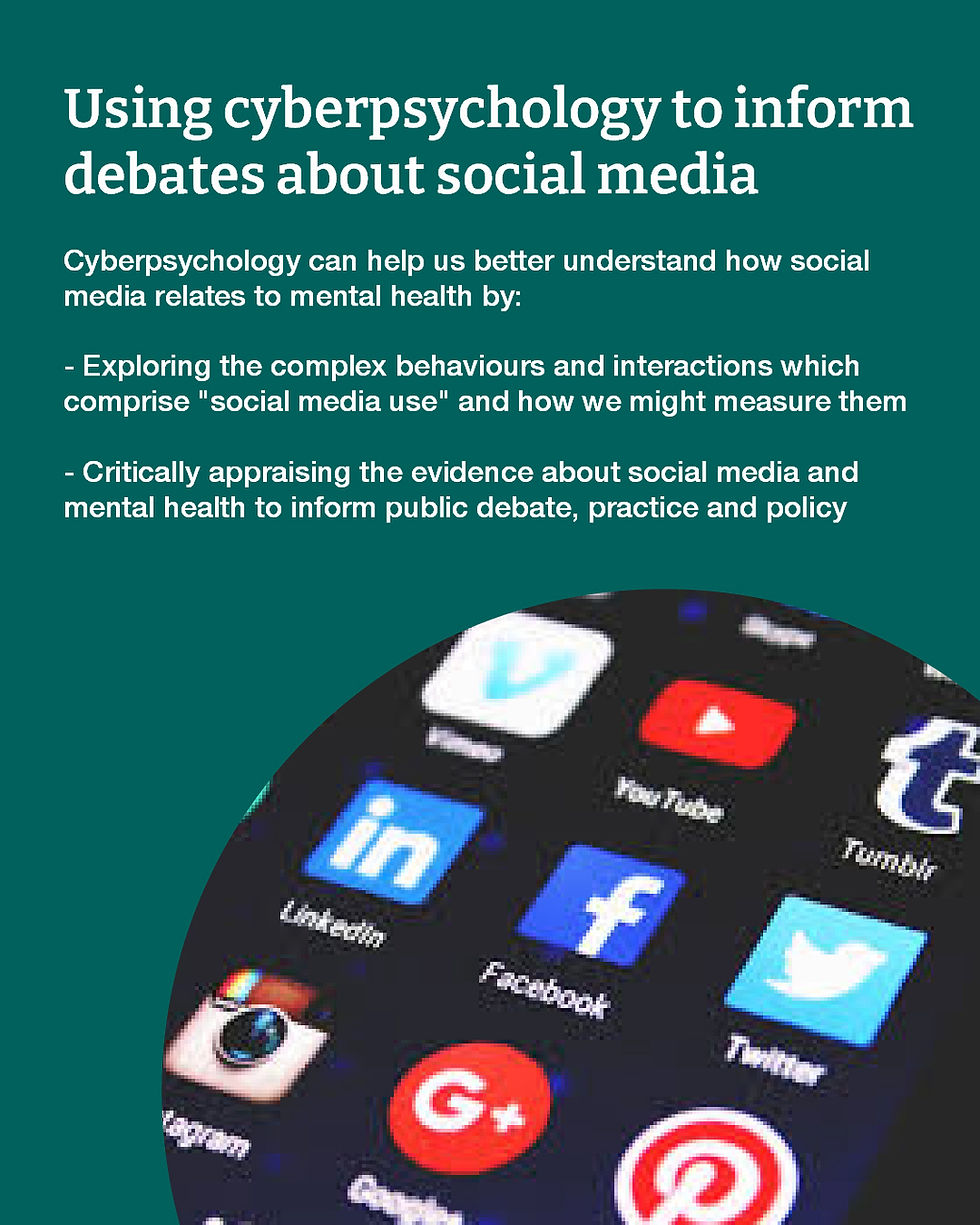Research Collaboration Models
- LindaKKaye

- Jun 27, 2019
- 3 min read
Updated: Jul 12, 2024
I was asked a question recently "How do you form research collaborations?" I had a think about it, consulted Twitter, and here is a summary of what I found!

Here are some examples from my own collaborative experiences to illuminate how these developed. There is not a right or wrong way to develop research collaborations. Some of how to do this relates to what stage of your career you may be at, but in general a lot of these will apply to most researchers.
People-led collaboration
Looking back, the majority of my collaborations are this format. A classic example is my work with Dr Rachel Kowert and Dr Sally Quinn, formalised in the following publication:
Kaye, L. K., Kowert, R., & Quinn, S. (2017). The role of social identity and online social capital on psychosocial outcomes in MMO players. Computers in Human Behavior, 74, 215-223. doi: 10.1016/j.chb.2017.04.030
Dr Rachel Kowert and I historically have very similar research. We were both doing research on the same sort of issues (social aspects of gaming) and had very similar values on the main direction this literature should take. We had been in contact via Twitter for some time and agreed that we should really focus our efforts and collaborate. We had a number of email exchanges, one Skype chat and from here, a research project was determined. I think it is noteworthy to mention here, that Dr Rachel Kowert and I have never actually met in person (regrettably)! Along the development of this, we felt Dr Sally Quinn had some important contributions too, so we invited her on board.
The shared interest in topic therefore was the driver behind this collaboration, as is the case for many of my research projects.
Idea-led collaboration
For me, this type of collaboration to date, has been less common, but not unheard of. A good example here is a paper recently published with Dr Sally Quinn:
Kaye, L. K. & Quinn, S. (2020). Psychosocial outcomes associated with engagement with online chat systems. International Journal of Human Computer Interaction, 36 (2), 190-198. doi: 10.1080/10447318.2019.1620524
Up until quite a late point in this work, I had been sole researcher on this project (which is quite rare for me). It was a project I had conceptualised, and collected data for. At the point of writing up, I realised that the data required advanced statistical techniques which I was really struggling to get my head around. At this point, I knew exactly the person to contact, who it turns out, quite enjoys running Structural Equation Modelling and Path Analysis. Enlisting a research partner here was really helpful in ensuring the data was being used appropriately and reported correctly. Dr Sally Quinn more than deserves her name on this paper for her worthy contributions to the accurate reporting and careful handling of our data.
Expert-led collaboration
A benefit of supporting dissertation students, PhD students and interns is that often they are keen to support my work. I have a few examples of this, but here is one which I will use as an example:
Kaye, L. K., Carlisle, C.-R., & Griffiths, L. R. W. (2019). A contextual account of the psychosocial impacts of social identity in a sample of digital gamers. Psychology of Popular Media Culture, 8(3), 259–268
I had been running projects on social identity and gaming and was looking to extend this further. I had two independent dissertation students who were both interested in doing research on this for their undergraduate work. As such, they designed studies in line with the conceptualisation I had in mind and used measures appropriate to the work I was doing, and therefore gained data which could be used to extend my existing work. We got a joint publication out of this, which of course is a huge achievement for any undergraduate student.
Novice-led collaboration
I have a few nice examples of these sorts of collaborations. In my experience, these are formulated from dissertation or PhD student ideas, whereby we run studies which develop into something publishable. I have two key examples to note here, both of which refer to undergraduate dissertation work and follow the same journey in this regard:
Kaye, L. K., Gresty, C. E. & Stubbs-Ennis, N. (2017). Exploring stereotypical perceptions of female players in digital gaming contexts. Cyberpsychology, Behavior and Social Networking 20 (12), 740-745. doi: 10.1089/cyber.2017.0294
Kleban, C. & Kaye, L. K. (2015). Psychosocial impacts of engaging in Second Life for individuals with physical disabilities. Computers in Human Behavior, 45, 59-68. doi: 10.1016/j.chb.2014.12.004
These examples are those in which the ideas of the research came solely from the undergraduate dissertation students. Their ideas were viable and could be guided to be a contribution to the existing literature. As such, having undertaken the requirements of their dissertation research, these were transformed into research papers and were eventually published. Again, an excellent achievement for any undergraduate student.



Comments